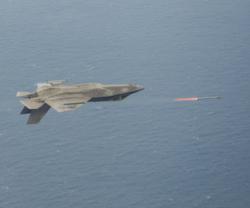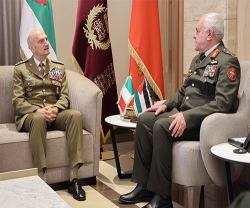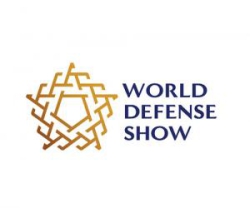Biomechanical Tests for LM's HULC Robotic Exoskeleton
01.07.2011 Products
Biomechanical testing of the Lockheed Martin ruggedized HULCTM exoskeleton is now underway at the U.S. Army Natick Soldier Research, Development and Engineering Center in Natick, Massachusetts.
The testing is expected to help shape future requirements for the HULC based on feedback from soldiers.
For seven weeks, U.S. Army warfighters will be evaluated to assess the effects of load carriage with and without use of the HULC exoskeleton. Biomechanical testing will measure changes in energy expended by users, assessing how quickly individuals acclimate to the system and whether there is a reduction in metabolic cost. Testing will also determine if there is an improvement in metabolic efficiency as measured by oxygen consumption per unit total mass, when wearing the ruggedized HULC as compared to not wearing the device under identical load, speed, grade and duration conditions.
Lockheed Martin's HULC is an un-tethered, battery powered, hydraulic-actuated anthropomorphic exoskeleton that provides users the ability to carry loads up to 200 pounds for up to 20 kilometers on a single battery charge over all terrains. HULC's design allows for deep squats, crawls and upper-body lifting with minimal human exertion. An advanced onboard micro-computer ensures the exoskeleton moves in concert with the operator. HULC is an innovative solution that improves endurance and reduces the risk of injury to the soldier.
"Our latest generation of the HULC design provides unmatched flexibility, strength and endurance," said Jim Ni, HULC Program Manager at Lockheed Martin Missiles and Fire Control. "It will enable soldiers to do things they cannot do today, while helping to protect them from musculoskeletal injuries."
The testing is expected to help shape future requirements for the HULC based on feedback from soldiers.
For seven weeks, U.S. Army warfighters will be evaluated to assess the effects of load carriage with and without use of the HULC exoskeleton. Biomechanical testing will measure changes in energy expended by users, assessing how quickly individuals acclimate to the system and whether there is a reduction in metabolic cost. Testing will also determine if there is an improvement in metabolic efficiency as measured by oxygen consumption per unit total mass, when wearing the ruggedized HULC as compared to not wearing the device under identical load, speed, grade and duration conditions.
Lockheed Martin's HULC is an un-tethered, battery powered, hydraulic-actuated anthropomorphic exoskeleton that provides users the ability to carry loads up to 200 pounds for up to 20 kilometers on a single battery charge over all terrains. HULC's design allows for deep squats, crawls and upper-body lifting with minimal human exertion. An advanced onboard micro-computer ensures the exoskeleton moves in concert with the operator. HULC is an innovative solution that improves endurance and reduces the risk of injury to the soldier.
"Our latest generation of the HULC design provides unmatched flexibility, strength and endurance," said Jim Ni, HULC Program Manager at Lockheed Martin Missiles and Fire Control. "It will enable soldiers to do things they cannot do today, while helping to protect them from musculoskeletal injuries."
Previous PostOshkosh Defense at AUSA’s Army Medical Exposition
Latest news
Latest events
Doha International Maritime Defence Exhibition & Conference (DIMDEX 2026)
19 - 22 Jan 2026Doha - QatarUMEX – SimTEX
20 - 22 Jan 2026ADNEC Centre Abu Dhabi, - United Arab EmiratesWorld Defense Show (WDS) 2026
08 - 12 Feb 2026Riyadh - Saudi ArabiaSAHA EXPO International Defence & Aerospace Exhibition
05 - 09 May 2026İstanbul Expo Center - Turkey






















